Totally Exposed: Revs Institute’s Annual Hoods Off Exhibit Shows the Evolution in Automotive Engines
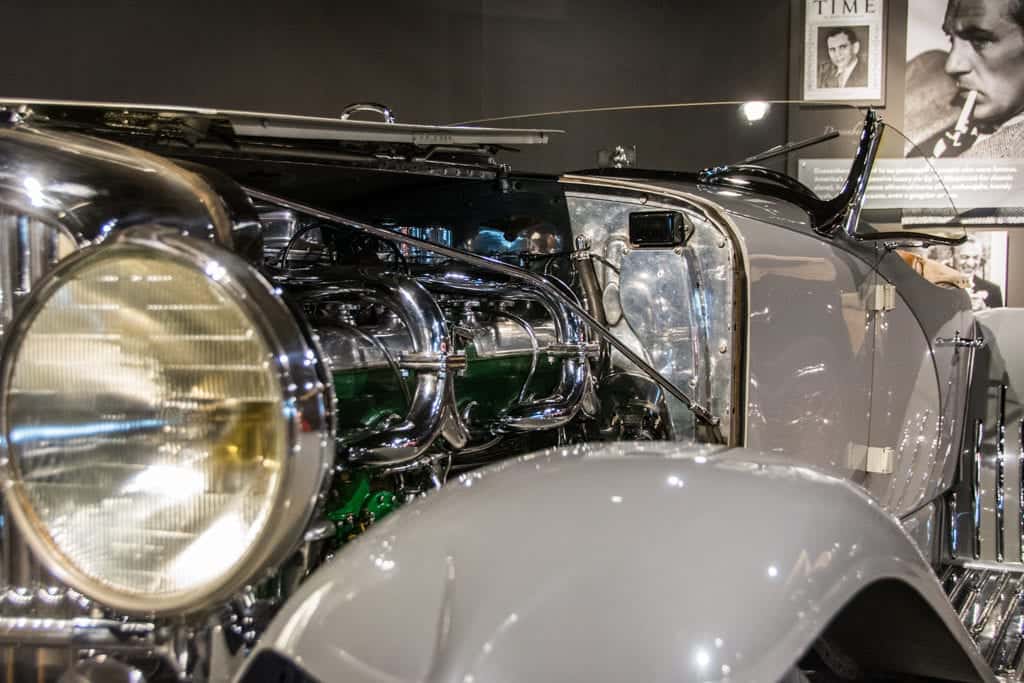
Naples, FL — When guests come to Revs Institute, they see more than 100 cars from the Collier Collection that cover nearly a century of automotive history: some with stunning styling, others with evolutionary engineering and more. But one thing most guests don’t see is what lies under the hood.
For the next few weeks, that will change. The Institute is going totally exposed on over 40 cars, opening or removing their hoods (or bonnets, if you’re English) so guests can peer into their inner workings. It’s become an annual event that adds a little spice to the summertime slow season at the southwest Florida museum.
The special exhibit opened June 17th, the Saturday before Father’s Day, and runs through July 8th. “We have such a variety in a span of over 100 years”, says Scott George, Vice President of Revs. “You can go from an 1896 Panhard et LeVassor with its Daimler V-Twin engine to the 1995 McLaren F1 BMW V-12 and everything in between. It gives you a chance to see different types of engine architecture.” This diversity lets guests see how engine design has evolved in the past hundred-plus years and how it has influenced their modern road cars.
Opening the hoods on 40 plus cars might seem a routine matter that should take minutes, but it isn’t that simple. Four museum staffers took a full day to set up the display because some of the hoods aren’t just opened but instead are suspended by wire above the engine. As with the tail section of the museum’s mid-engine Porsche 908 LH, the hanging hoods are precisely positioned so they could be dropped into place. (Only in theory, of course).
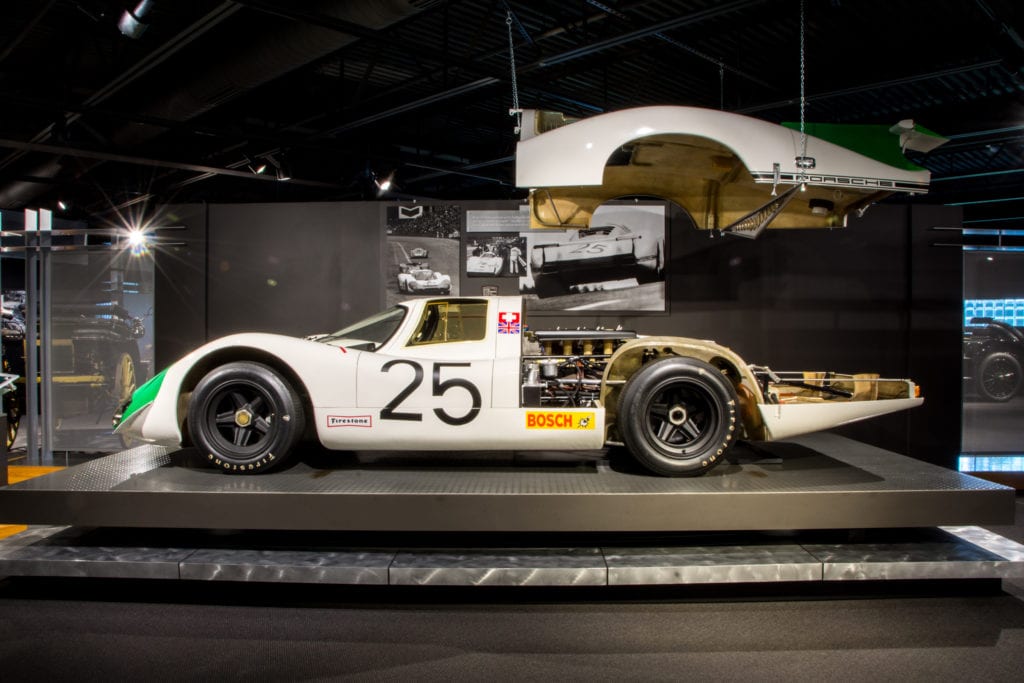
Suspending the hoods creates a dramatic display effect, says George, and allows museum guests to assess the flow of a car’s design lines better than with the hoods simply opened. “It’s also fun to do it and keep things fresh, he adds. “If you do it (open hoods) all the time, it’s not fresh”.
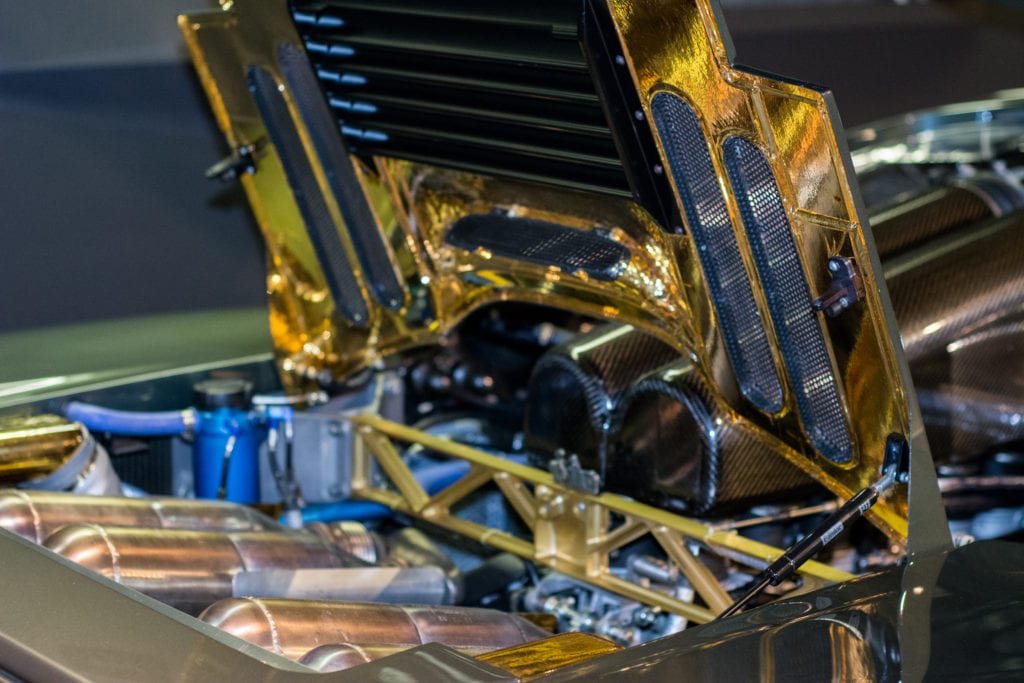
One engine guests will see is that of the 1995 McLaren F1. That engine is a BMW Motorsports V12 engine, which can generate some serious heat while propelling the car to its top speed of 240 MPH. To combat that heat, McLaren lined the engine compartment with 24 karat gold foil which reflects and rejects heat, to help distribute the heat more evenly. This prevents the engine bay, paint and carbon fiber bodywork from overheating which could cause damage.
The hood on the 1913 Peugeot Coupe de l’Auto has been removed so guests can see the little four-cylinder, four valve, dual overhead camshaft engine, grandfather of the DOHC engines standard in many modern cars. The Coupe de l’Auto 3.0 liter engine produced 90 horsepower, exceedingly modest by modern standards, but it was racing against Fiats with 15-liter engines and holding its own.
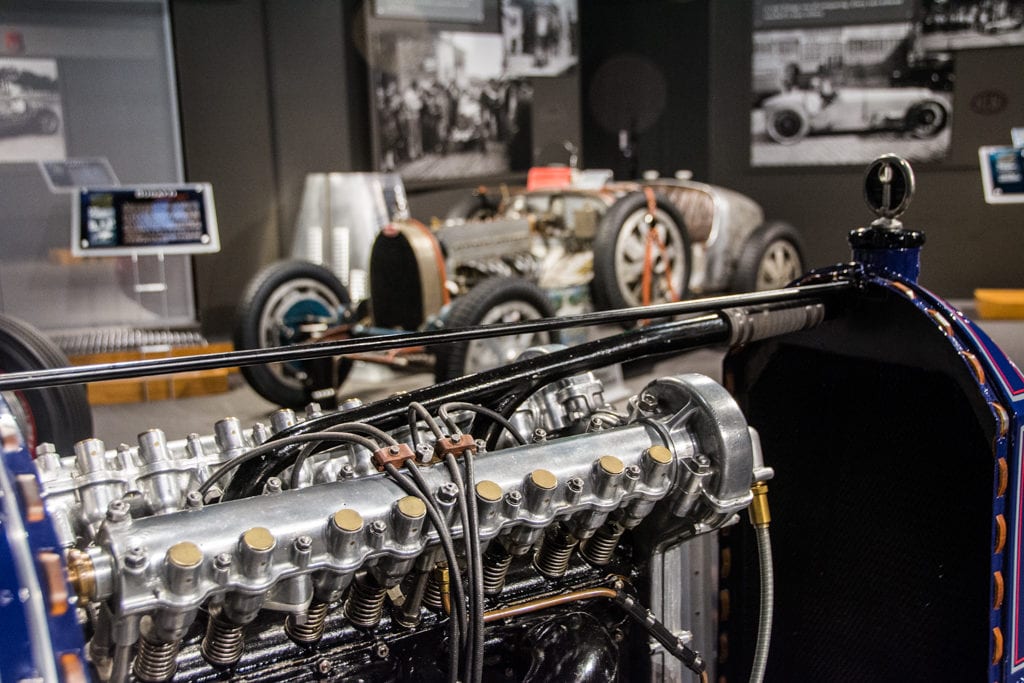
The small and nimble Peugeot was fast and maneuverable, able to bob and weave through the larger cars. This engine design was modified over time and eventually inspired American engineer Fred Offenhauser to work with the dual-overhead-cam configuration.
His Offenhauser engines, nicknamed the “Offy,” were used for more than 50 years in Indianapolis race cars. American sportsman Briggs Cunningham used an Offy in his C-6R (now part of the Collier Collection) at LeMans in 1955, but the high-revving design didn’t fare well in an endurance race.
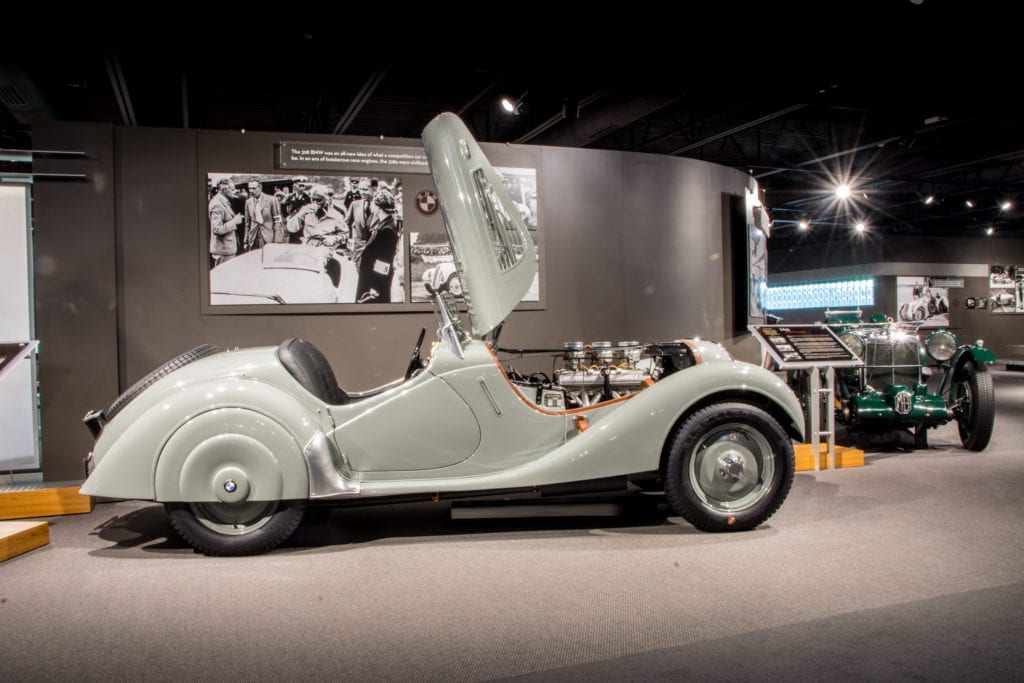
The hood on the 1938 BMW is almost balanced vertically. The car’s engine has a hemispherical head – a grapefruit-shaped protrusion at the top of each cylinder, boosting displacement and therefore power. The word Hemi sparks an emotional connection to almost any muscle-car fan, and this six-cylinder BMW is a very early example of the design. Hemi engines were tweaked over the years in multiple cars to add more power and efficiency.
The engines are “the business end of the car,” declared one recent guest, retiree Dave Perkowitz from Cape Coral, FL, explaining his decision to visit Revs Institute for the first time.
Likewise, the hoods off exhibit is “over the top,” said another visitor, Marshall Siler from Dover, DE. A special attraction, he added, is that the cars are kept in running condition, unlike the airplanes at the aerospace museum where he works. Siler brought five of his seven grandchildren to see the exhibit – one reason that Revs saw a 42% increase in attendance from the week before the exhibit opened.
#####